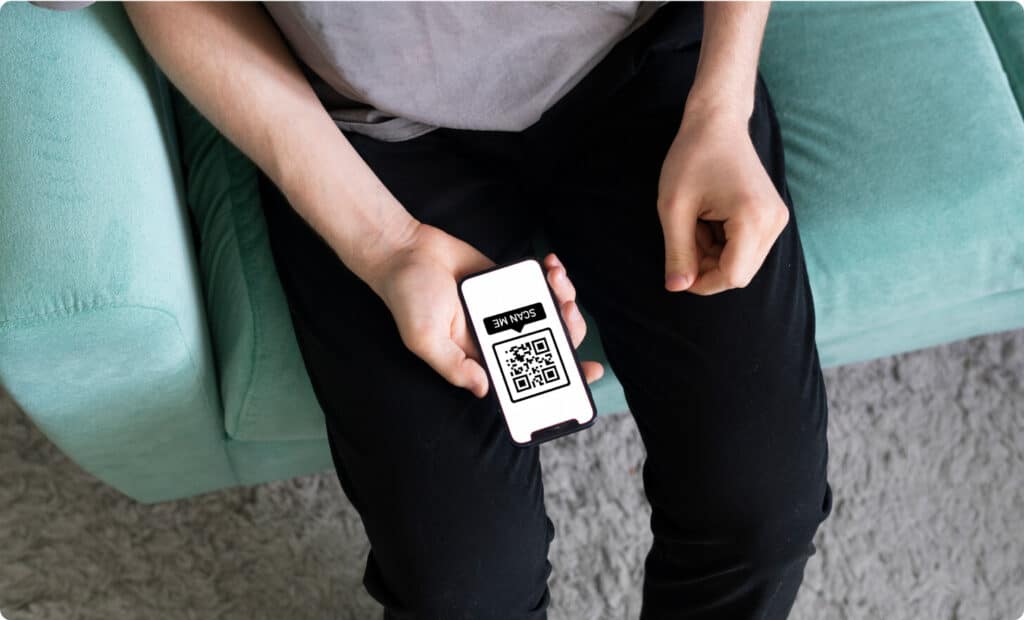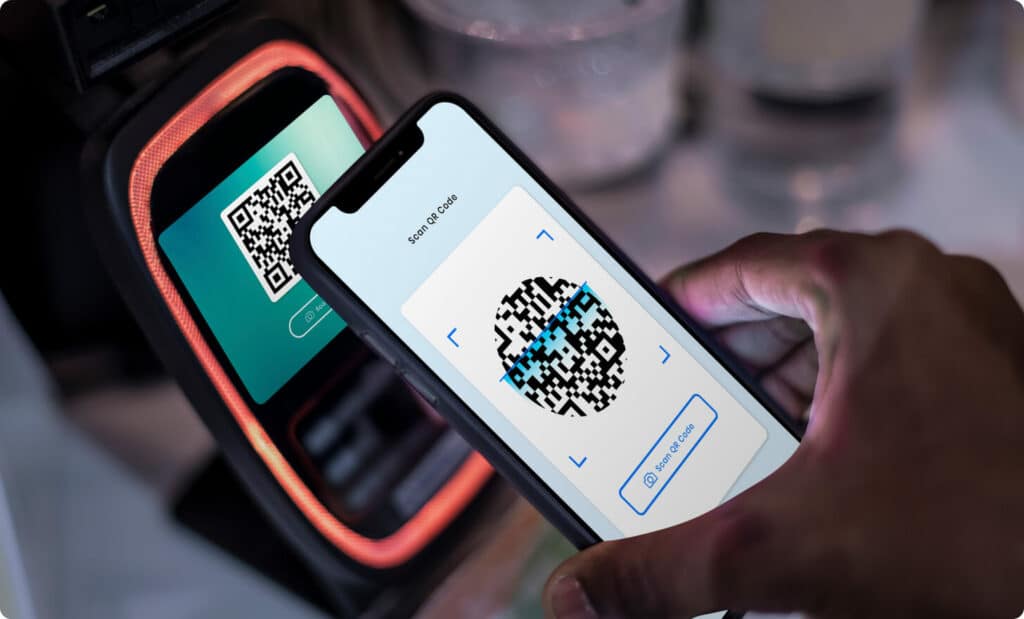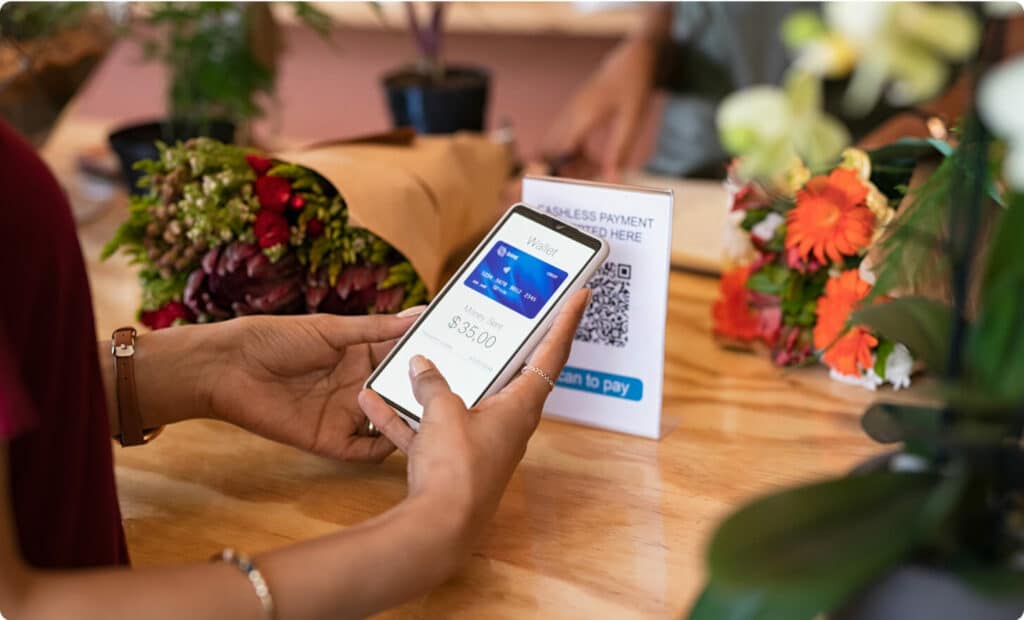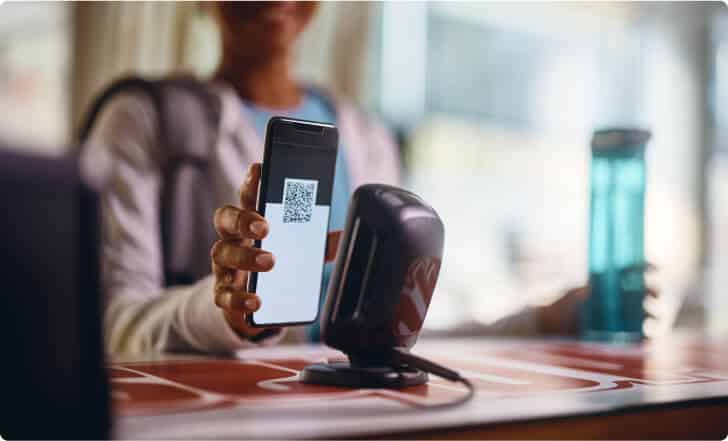A comprehensive exploration of QR code technology
QR code technology, also known as quick response code technology, is an advanced tool for encoding information in a visually scannable format that has significantly impacted how information is shared and accessed digitally. Originating from a practical need in the automotive industry, QR codes have transcended their initial application to become a staple in numerous fields, ranging from marketing to mobile payments. This section expands on the foundational aspects of QR code technology, emphasizing its definition, origins, and basic operational principles. The QR code system, invented in 1994 by Denso Wave, was designed to store large amounts of data and be easily scannable. It has various applications, including tracking products in the supply chain, marketing, coronavirus tracing, transferring payments, and augmented reality.
What is a QR code?
A QR code, or Quick Response code, is a type of two-dimensional barcode that is capable of storing information both vertically and horizontally. Unlike traditional barcodes, which are limited to storing data in one dimension, QR codes can contain a variety of data types, including alphanumeric characters, byte/binary, and even Kanji characters. This versatility allows a single QR code to contain significantly more data and to be used in more diverse applications.
A standard QR code is a specific type of QR code with identifiable components, including three large squares outside the QR code.

The origins of QR code technology
The first development team of QR code technology was spearheaded by Masahiro Hara from Denso Wave, a subsidiary of the Toyota Group. The technology was created in 1994 with the primary goal of improving the speed of scanning components and tools in vehicle manufacturing. The original QR code created by Denso Wave paved the way for other types of QR codes, including Aztec code, Maxi code, PDF417, and Semacode. Denso Wave aimed to develop a code system that could quickly and accurately store and manage production data, something that traditional barcodes could not achieve at the desired speed or efficiency. Notably, the company made the patent public, which helped facilitate widespread adoption and development of QR code technology.
Key features of QR codes
Position detection patterns: One of the distinctive features of QR codes is the position detection patterns located at three corners of the square-shaped grid. These patterns are crucial as they help scanners identify and orient the code correctly, regardless of the angle at which the code is scanned. This feature is essential for ensuring quick and reliable readability.
Alignment patterns: In addition to position detection patterns, QR codes also include smaller alignment patterns that appear throughout the code to assist in maintaining the accuracy of the scan across its entire area. This is particularly useful for larger QR codes or in instances where the code might be partially obscured or distorted.
Timing patterns: Timing patterns consist of alternating black and white cells that extend across the QR code from one position detection pattern to another. These patterns help the optical scanner determine the dimensions of each data cell in the code, facilitating the correct interpretation of the QR code’s data. The error correction mechanism inherent in the QR code structure contains data and error correction blocks, allowing up to 30% of the Code to be damaged while still being readable.
How QR codes work
The process of using QR codes involves two main steps: creation and scanning. QRs are generated using QR code generators, which encode the desired information into a format that can be easily read by QR scanners. These QR code generators allow for the creation of customizable and mobile-friendly QR codes, enabling extensive information sharing about events, products, and services while fitting the brand image and tracking metrics for campaign analysis. Once created, these codes can be printed or displayed digitally.
To access the information contained in a QR code, a user scans the code using a mobile device equipped with a camera and QR scanning software. The software decodes the information encoded within the QR code and performs actions based on this data, such as opening a web page, revealing a coupon, or displaying text.
As technology continues to evolve, the foundational elements of QR codes illustrate the ingenuity of their creation and the foresight of their developers, setting the stage for future innovations in data encoding and scanning technology.

Security and applications of QR code technology
As QR code technology has expanded into numerous sectors, understanding its security implications and diverse applications is crucial. This section covers the potential security risks associated with QR codes, their mitigation, and the broad range of applications where QR codes are making a significant impact. Denso Wave made their QR code publicly available and declared they would not exercise their patent rights, contributing to its widespread adoption and various new uses.
QR code generators: Creating custom QR codes
QR code generators are essential tools that allow individuals and businesses to create QR codes tailored to their specific needs. These generators enable the encoding of various types of data, such as URLs, contact information, or promotional details. Users can choose the type of content they wish to encode and even customize the appearance of the QR code to include logos or branding elements.
Potential security risks with QR codes
While QR codes are incredibly useful, they are not without security risks. Malicious QR codes can be designed to direct users to harmful websites, initiate downloads of malware, or even intercept sensitive personal data. The openness of QR code technology, allowing anyone to create and distribute QR codes, exacerbates these risks.
Malicious QR codes: Not legitimate QRs pose a significant threat as they can be easily disguised within legitimate-looking codes. When scanned, these malicious codes can redirect users to phishing sites or other harmful online environments. This deceptive quality of other codes requires users to be vigilant about the sources from which they scan QR codes.

Strategies for safe QR code use
To combat the risks associated with scam QR codes, users are advised to:
– Scan only from trusted sources: Avoid scanning QR codes that appear in untrusted or unsolicited locations.
– Use secure QR scanner apps: Some apps offer security features that check the URL for safety before accessing it.
– Stay informed about QR code scams: Awareness of common QR code-related scams can help users avoid falling victim to these tactics.
Expanding applications of QR code technology
QR codes have found a vast array of applications across different sectors, demonstrating their versatility and utility. Micro QR codes, a smaller version of the QR code standard, are designed for limited symbol size applications and come in different versions capable of holding varying amounts of characters. They are particularly useful in the manufacturing industry and are available as open-source technology, redefining the print to digital marketing scene.
Marketing and advertising campaigns: In marketing, QR codes are used to bridge the gap between offline and online media. By scanning a QR code on a flyer, billboard, or product packaging, consumers can instantly access more information about a product, participate in promotional campaigns, or register for events without needing to enter a URL manually.
Retail and payment systems: QR codes streamline transactions in retail environments by simplifying the payment process. Consumers can scan a QR code at checkout to pay through mobile payment platforms or digital wallets. This system not only speeds up the transaction process but also enhances the customer experience by offering a contactless payment option.
Manufacturing and supply chain: In the manufacturing industry and supply chains, QRs improve the tracking and management of goods. By scanning QR codes on products or components, companies can track the movement and status of items throughout the supply chain, enhancing efficiency and reducing the risk of loss or mismanagement.
Digital wallets and mobile payments: QR codes are integral to the functioning of digital wallets and mobile payment systems, where they are used to store and transfer payment information securely. This application has seen significant growth, particularly in regions where mobile penetration is high, and traditional banking infrastructure is less developed.
Future directions and emerging alternatives to QR code technology
As the digital landscape evolves, so too does the technology for encoding and accessing information. QR codes have been a significant player, but emerging technologies are beginning to offer advanced capabilities that could redefine how we interact with digital data. This section explores the future directions of QR code technology and its potential replacements, focusing on innovations and enhancements that may influence its usage. Enhanced error correction features are being developed to allow QR codes to be read even when partially damaged or obscured. The error correction mechanism inherent in the QR code structure contains data and error correction blocks that allow for up to 30% of the Code to be damaged.
Enhancements in QR code technology
While QR codes are already highly efficient, ongoing advancements aim to increase their capacity, security, and ease of use. Enhanced error correction features are being developed to allow QR codes to be read even when partially damaged or obscured. Additionally, efforts to standardize QR code security measures are underway to help mitigate the risks associated with malicious QR codes.
Increased data density and efficiency: Technological improvements may lead to QR codes capable of holding more data while occupying less physical space. This advancement would be particularly beneficial in environments where space is at a premium, such as in advertisements or retail products.
Improved scanning technology: Advancements in camera technology and image processing software are expected to reduce the time and improve the accuracy with which QR codes can be scanned. This would enhance the user experience by making QR code scanning quicker and more reliable, even under less-than-ideal conditions.
Emerging technologies replacing QR codes
While QR codes continue to be widely used, newer technologies are beginning to challenge their dominance in certain applications.
Data matrix codes: Data Matrix codes are similar to QR codes but can store more information in a smaller space. They are particularly useful in industrial settings where precision is critical, and item sizes are small. Data Matrix codes also feature higher error correction capabilities, making them more robust than traditional QR codes.
Augmented reality (AR) tags: AR tags go beyond traditional QR codes by integrating with augmented reality technologies. These tags can trigger the display of 3D models, videos, and interactive data overlays when scanned with an AR-capable device. This integration offers a more immersive experience and can be particularly useful in marketing, education, and entertainment.
Near field communication (NFC) tags: NFC tags provide a touch-based interaction with digital device that doesn’t require a visual scan. Users can access information by simply bringing their device close to an NFC tag. This technology is increasingly used for payments and secure access control, areas where QRs are also prevalent but may offer less convenience and security.
Visual light communication (VLC): VLC involves using light signals to transmit data, which can be received and decoded by a smartphone’s camera. This technology is still in the developmental stages but promises to enable faster data transmission rates than QR codes and could be used in similar applications with enhanced capabilities.
QR code technology in global industries: Expansion and impact
The widespread adoption of QR code technology has had a profound impact on multiple sectors globally, transforming practices in marketing, retail, manufacturing stores information and, and beyond. This section explores the broad implications of QR code technology in various industries, illustrating its versatility and critical role in modern digital landscapes. Newer versions of smartphones come with an integrated QR Code reader, such as Bixby Vision for Samsung and the iOS 11 operating system for Apple. For phones that do not have an integrated reader, QR Code reader apps are available in the app stores.

QR codes in marketing and advertising
In the realm of marketing and advertising, QR codes have become indispensable tools for bridging the gap between physical and digital experiences. They enable marketers to deliver interactive content directly to consumers’ mobile devices, enhancing engagement and providing measurable outcomes. For example, a QR code on a billboard or magazine ad can direct users to a landing page, social media account, or promotional offer, instantly connecting them with more in-depth content and interactive experiences.
Campaign integration: QR codes are seamlessly integrated into marketing campaigns to track user engagement and gather valuable data on consumer behavior. This data can then be used to refine marketing strategies and increase the effectiveness of future campaigns.
Retail innovations with QR codes
The retail sector utilizes QR codes to enhance the shopping experience and streamline operations. QR codes on product labels and digital signage can provide customers with detailed product information, reviews, or even augmented reality experiences. In-store QR codes can facilitate a self-service environment where customers can scan items for pricing, availability, or additional options.
Mobile payment systems: QR codes have revolutionized payment systems, offering a fast and secure method for transactions. By simply scanning a QR code, customers can complete purchases without the need for physical cash or cards, aligning with the growing trend toward digital wallets and contactless payments.
QR codes in manufacturing and logistics
Manufacturing and logistics have seen significant improvements in efficiency and accuracy with the adoption of QR code technology. In these sectors, QR codes are used for tracking components along the supply chain, managing inventory, and ensuring the traceability of products from the manufacturing process to production to delivery.
In prospect, QR codes are likely to become more and more essential for supply chain traceability and transparency with the introduction of the new GS1 Digital Link standard. This standard makes it possible to create 2D barcodes that work with professional scanners (like at POS checkouts) and regular smartphones, replacing old barcodes and other codes on product packaging.
Enhancing supply chain visibility: QR codes provide real-time data on the whereabouts and status of goods, reducing errors and improving the overall management of supply chains. This visibility is crucial for companies looking to optimize their operations and respond quickly to market demands.
Impact on consumer electronics and app development
The proliferation of mobile devices has been a key driver of QR code adoption. Most modern smartphones are equipped with built-in QR scanners, usually integrated within the camera app, which has encouraged developers to create a variety of QR-related applications. These apps range from basic scanners to complex platforms that use QR codes for functions like event ticketing, boarding passes, and personal identification.
App store offerings: Both the Apple App Store and Google Play Store feature numerous other free apps and paid QR scanner apps, which often include additional features such as history logs, security checks, and even customization options for generating personal QR codes. This ease of access has facilitated widespread user adoption across demographics.

Security enhancements and ethical considerations in QR code usage
As QR code technology becomes more embedded in our daily lives, the importance of enhancing security measures and addressing ethical considerations grows. This part of the article delves into the security enhancements that are being applied to QR code technology and discusses the ethical issues that arise from its widespread use.
Advancing security in QR code technology
The simplicity and accessibility of QR codes also make them a potential target for misuse. Recognizing this vulnerability, technology developers and cybersecurity experts are constantly working to fortify QR codes against threats.
Implementing advanced encryption: One of the primary security enhancements for QR codes is the incorporation of advanced encryption techniques. Encryption ensures that the data embedded within QR codes is not easily deciphered or tampered with by unauthorized parties. This is particularly crucial for QR codes that transmit sensitive information such as personal data or payment details.
Secure QR code standards: Efforts to standardize QR code security are underway, with industry groups and international organizations collaborating to set guidelines that define how QR codes should be safely generated, distributed, and scanned. These standards are vital for maintaining the integrity of QR codes used in financial transactions and personal data exchanges.
Ethical considerations of QR code deployment
As QR codes become ubiquitous, the ethical implications of their use must be considered to ensure that they do not infringe on privacy or lead to data misuse.
Privacy concerns: QR codes can potentially be used to track a user’s device and behavior and gather personal data without explicit consent. There is a need for clear regulations that dictate how data collected via QR codes should be handled, ensuring that users are informed and their privacy is protected.
Accessibility issues: While QR codes offer many conveniences, they can also pose accessibility challenges for certain populations, including older adults or individuals without smartphones. It’s essential for businesses and organizations to provide alternative methods of accessing the same information or services to ensure inclusivity.
Reducing the risks of malicious QR codes
Given the risks associated with malicious QR codes, there are several strategies that organizations and individuals can adopt to safeguard against these threats.
Public awareness campaigns: Educating the public about the dangers of scanning unknown or unsolicited QR codes is crucial. Awareness campaigns can inform users about how to identify potentially malicious codes and encourage them to use only trusted QR scanning apps that offer security features.
Development of secure scanning apps: App developers are continually improving QR scanning applications to include more robust security features, such as URL checking and anti-phishing measures. These apps play a crucial role in preventing the execution of harmful actions when a malicious QR code is scanned.

Expanding global access to QR code technology: Implications and strategies
The global penetration of QR code technology is vast, yet its impact varies significantly across different regions and communities. This section explores the implications of expanding access to QR code technology worldwide and outlines strategies to enhance its adoption and utility in less digitally integrated areas.
Global penetration of QR code technology
QR code technology has seen widespread adoption in various parts of the world, particularly in Asia, where countries like China and Japan have integrated QR codes into everyday life. In these regions, QR codes are used for everything from personal identification and public transport to many retail stores and government services. The success in these countries illustrates the potential of QR codes to streamline services and improve accessibility to information.
Adoption challenges in developing regions: In contrast, some developing regions face challenges in adopting QR code technology at a similar scale. Issues such as limited internet access, lower smartphone penetration, and lack of digital literacy can hinder the effectiveness and reach of QR code implementations.
Strategies to enhance QR code adoption
To overcome these barriers and promote the widespread use of QR codes, targeted strategies are needed:
Improving infrastructure: Investing in digital infrastructure, such as more widespread and reliable internet access and affordable mobile technology, is crucial. These improvements can enable broader use of QR codes by making digital tools more accessible to the general population.
Educational programs: Implementing educational programs that teach digital literacy skills can empower individuals to use QR code technology effectively. These programs should focus on both the benefits and the safe usage of QR codes, ensuring that users are aware of potential security risks and know how to avoid them.
Government initiatives and policies: Governments can play a significant role in the adoption of QR code technology by integrating it into public services and promoting its use through campaigns and initiatives. Policies that support the development of digital services and encourage the use of QR codes in businesses and institutions can also drive adoption.
Economic and social implications
The expansion of QR code technology has significant economic and social implications:
Enhancing business operations: For businesses, QR codes offer a cost-effective way to connect with customers, manage products, and streamline operations. Small and medium enterprises, in particular, can benefit from the low-cost deployment of QR code systems to enhance competitiveness and operational efficiency.
Impact on social inclusion: By providing easy access to information and services, QR codes can contribute to greater social inclusion. However, efforts must be made to ensure that this technology does not exclude non-digital natives or those without access to their mobile phones and devices.
QR code technology and consumer behavior: Trends and insights
As QR code technology continues to permeate various aspects of daily life, its influence on consumer behavior is profound and multifaceted. This section explores how QR codes are shaping consumer interactions with brands, influencing purchasing decisions, and altering the dynamics of the consumer market.
Influence of QR codes on consumer engagement
QR codes have revolutionized the way brands interact with consumers by providing a seamless bridge between physical and digital experiences. These codes facilitate direct access to digital content, making it easier for consumers to engage with brands in meaningful ways.
Interactive marketing: One of the key trends is the use of QR codes in interactive marketing campaigns. By scanning a QR code, consumers can unlock exclusive content, special offers, or augmented reality experiences. This level of interaction not only enhances the consumer experience but also increases brand engagement and loyalty.
Real-time information access: QR codes allow consumers to access information about products and services instantly. This capability is particularly valuable in retail environments, where QR codes on product packaging can provide detailed information about ingredients, usage instructions, or provenance, helping consumers make informed purchasing decisions.

QR codes and purchasing decisions
The convenience and immediacy of QR codes influence consumer purchasing behavior by simplifying the decision-making process. QR codes linked to product reviews, price comparisons, and immediate checkout options can streamline transactions and influence the consumer’s choice at the point of sale.
Enhancing online and offline integration
QR codes effectively blend online and offline shopping experiences. For instance, a consumer can scan a QR code in a physical store to compare prices or check stock online. This integration helps retailers deliver a more cohesive and satisfying shopping experience.
Consumer trust and QR code usage
While QR codes offer numerous benefits, their impact on consumer trust varies. The security concerns associated with QR codes can affect consumers’ willingness to use them, particularly if they have concerns about data privacy or exposure to malicious links.
Building trust through transparency
To mitigate these concerns, companies are increasingly focusing on transparency and security in their QR code initiatives. Providing clear information about what data is collected and how it will be used can help build trust among consumers. Implementing robust security measures to protect data integrity and privacy is also crucial.

Future trends in QR code technology and consumer behavior
Looking ahead, QR codes are likely to continue influencing consumer behavior as technology evolves and integrates more deeply into consumer habits.
Personalization and customization
Future developments may include the development of more personalized QR codes that cater to individual consumer preferences and histories. These personalized codes could link to customized offers and content, enhancing the consumer experience and increasing the effectiveness of marketing strategies.
Integration with emerging technologies
The integration of QR codes with other technologies, such as blockchain for secure transactions, AI for enhanced personalization, or GS1 Digital Link, is expected to further influence consumer behavior. These integrations could provide more secure and tailored experiences, driving higher engagement and satisfaction.

A brief conclusion on QR code technology
QR code technology has become a ubiquitous tool in the digital landscape, offering versatility and ease of use across numerous sectors. While it enhances consumer engagement and streamlines operations, it also raises security and accessibility challenges. Moving forward, QRs are likely to evolve with advancements in technology and shifts in consumer behavior, maintaining their relevance but potentially facing competition from emerging technologies like NFC and augmented reality. Ensuring their continued efficacy and security will be crucial as they adapt to new applications and global markets.

